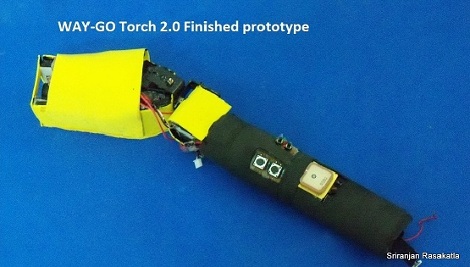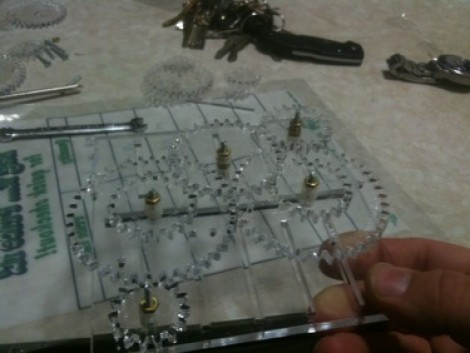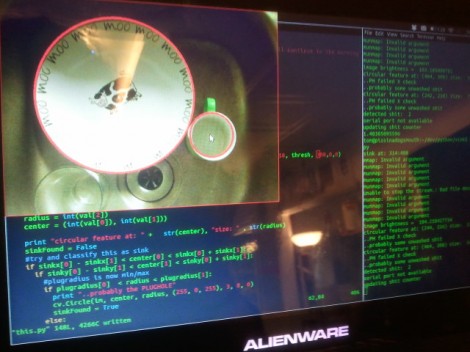
Flashlights are so 20th Century. Be it the incandescent type that popped up very early on, or LED models with came around in the 90’s, there’s not much excitement to the devices. But [Sriranjan Rasakatla] is doing his best to change that. This is his WAY-GO Torch, an intelligent flashlight (a Smart Light?) that will not just light your path, but overlay useful data on it.
At the front of the unit a pico projector is housed on a jointed assembly. This allows the device to project data on the ground in front of you. Using a digital compass and GPS module, it can show the polar coordinates, guide you on your way, or provide information about the buildings around you. The motorized mount provides image stabilization based on IMU data. Check out the demonstration video after the break. It shows general functionality in the first part of the clip, with some footage of the stabilization system at about 4:30.
This really does seem like it came right out of a Sci-Fi novel. It’s useful, but the complexity makes it surprising that [Sriranjan] was able to pull it off. We wonder how the battery life is on the device, but it can’t be any worse that one of those really huge flashlight builds.
Continue reading “Intelligent Flashlight Will Literally Show You The Way”





















